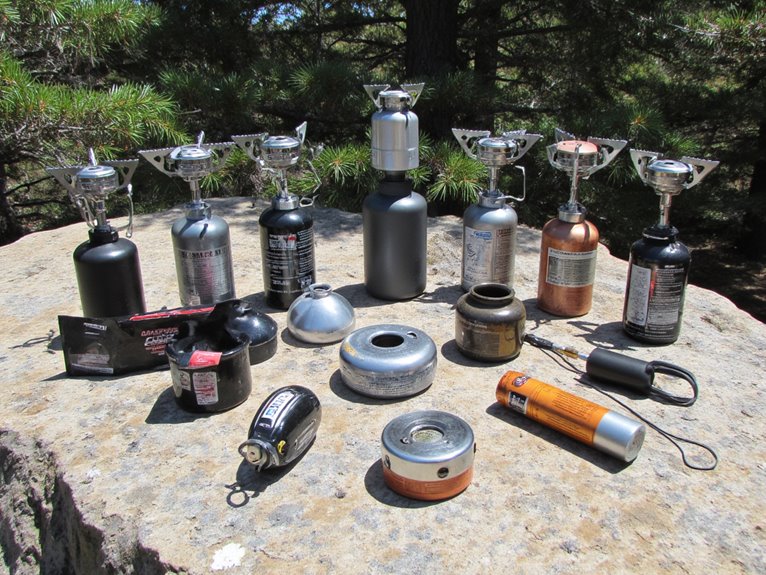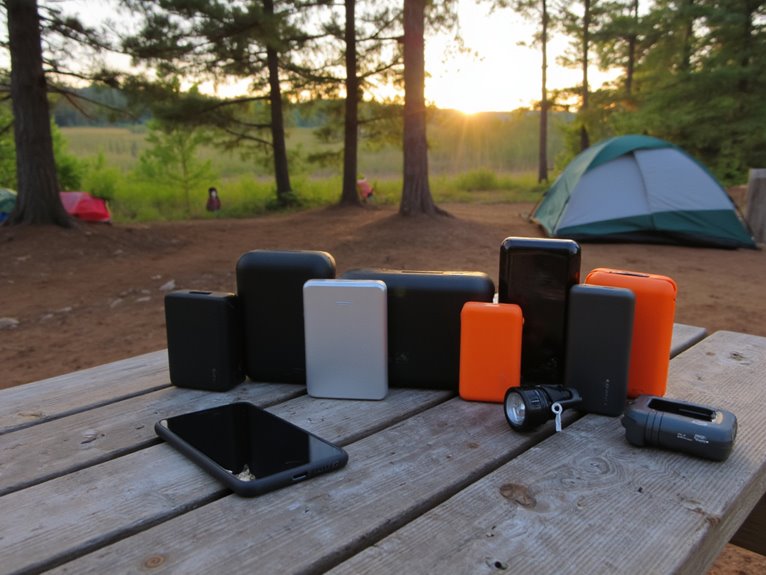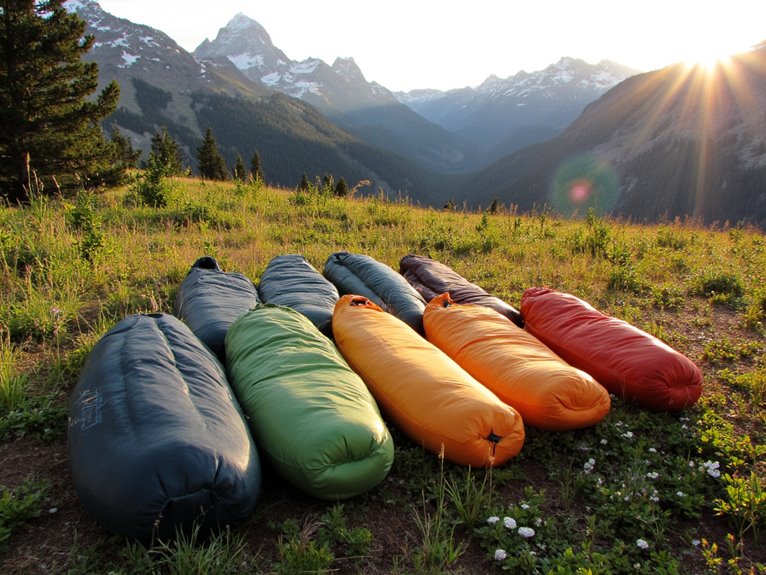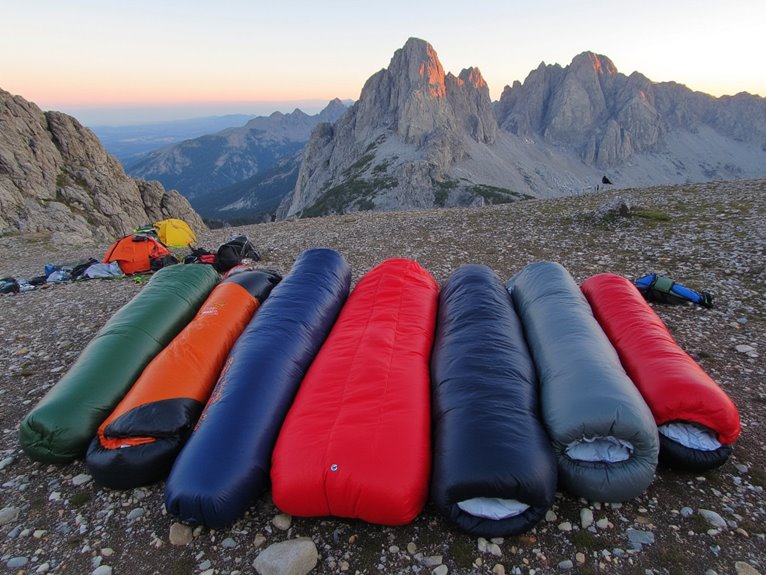Are Hydration Packs Worth It?
Hydration packs offer a superior hydration solution for outdoor enthusiasts and athletes, providing convenient, hands-free access to water that far surpasses traditional water bottles. They cater to different needs and preferences, coming in various sizes, materials, and features. While they may be more expensive than traditional water bottles, the benefits of convenient hydration and improved performance justify the investment for frequent users. To determine if a hydration pack is right for you, consider your activity level, climate, and personal preferences. Investigate the features and benefits of hydration packs to discover how they can enhance your outdoor experience.
We are supported by our audience. When you purchase through links on our site, we may earn an affiliate commission, at no extra cost for you. Learn more. Last update on 16th December 2025 / Images from Amazon Product Advertising API.
Hydration Packs 101: The Basics
A hydration pack is a type of backpack designed to hold a water bladder and drinking tube, allowing individuals to stay hydrated during outdoor activities.
This innovative design enables users to carry a significant amount of water, making it an essential gear for hikers, runners, and cyclists.
The hydration pack's internal compartment stores the water bladder, while the drinking tube is routed to the shoulder strap or chest area, providing easy access to water.
This convenient setup allows users to drink water without removing the pack, making it ideal for activities that require constant hydration.
Hydration packs come in various sizes, materials, and features, catering to different needs and preferences.
Capacity and Flow Rate Matters
Capacity requirements for hydration packs vary greatly depending on factors such as activity duration, climate, and individual needs.
For instance, a short hike on a cool day may only require a 1-liter pack, while a long-distance runner in a hot desert environment may need a 3-liter pack.
Flow rate is another vital aspect, as it affects how easily and comfortably you can drink on-the-go.
A high-flow rate is essential for high-intensity activities, allowing you to rehydrate quickly and efficiently.
When choosing a hydration pack, consider your specific needs and preferences to guarantee a comfortable and convenient hydration experience, making certain you select a pack that meets your capacity and flow rate requirements.
This will confirm a comfortable and convenient hydration experience.
Comfort and Fit Considerations
When considering comfort and fit considerations in hydration packs, several key factors play a crucial role.
A well-designed shoulder strap system is essential, as it can profoundly impact the overall comfort and stability of the pack.
Furthermore, the torso hug and fit of the pack are critical, as they directly affect how the pack rests on the wearer's body.
Shoulder Strap Design
Properly designed shoulder straps are essential to ensuring a comfortable and secure fit, as they distribute the weight of the pack evenly across the shoulders and back.
A well-designed shoulder strap system should provide adequate cushioning, breathability, and adjustability to accommodate different torso lengths and shoulder widths.
Look for straps with thick, ventilated padding and adjustable sliders that allow for customizable fit. Additionally, consider straps with load-lifting technology, which helps to redistribute the weight of the pack, reducing fatigue and discomfort.
A good shoulder strap design should also include integrated sternum straps and load stabilizers to prevent the pack from shifting during activity.
Torso Hug and Fit
A well-designed hydration pack should also provide a snug, secure fit around the torso, as a comfortable and stable torso hug is essential for peak performance and comfort during activity.
This is achieved through a thoughtful design that takes into account the natural curves and contours of the human body.
A good hydration pack should have adjustable torso straps that allow for a customizable fit, ensuring the pack stays in place even during high-intensity activities.
Additionally, the pack's back panel should be breathable and moisture-wicking to prevent chafing and discomfort.
Insulation and Temperature Control
Most hydration packs incorporate insulation and temperature control features to maintain a consistent beverage temperature during outdoor activities.
This is vital, as extreme temperatures can affect the taste and quality of the drink.
Insulation materials, such as foam or fiberfill, are used to reduce heat transfer and keep liquids at a comfortable temperature.
Some packs also feature thermal-lined compartments or specialized sleeves to further regulate temperature.
Additionally, some models may include ice pockets or cooling compartments to keep drinks chilled on hot days.
Effective insulation and temperature control guarantee that the beverage remains invigorating and enjoyable, even in extreme outdoor conditions.
Durability and Construction Quality
In terms of hydration packs, durability and construction quality are vital factors to take into account.
The selection of materials and the quality of seams and stitches can substantially impact the pack's ability to withstand the rigors of outdoor activities.
In this regard, manufacturers' choices can make all the difference between a pack that lasts for years and one that falls apart prematurely.
Material Selection Matters
Three key factors – fabric, stitching, and hardware – determine the durability and construction quality of a hydration pack.
The choice of fabric, for instance, can substantially impact the pack's overall durability. Look for packs made from rip-stop nylon, polyester, or Cordura, which offer excellent abrasion resistance and durability.
- Water-resistant coatings to prevent water ingress
- Reinforced seams to minimize wear and tear
- Durable zippers to withstand frequent use
A well-constructed hydration pack can withstand the rigors of outdoor activities, ensuring your gear remains safe and dry.
Seam and Stitch Quality
Proper seam and stitch quality is essential to a hydration pack's durability, as it guarantees that the seams can withstand the rigors of outdoor activities and keep the contents dry.
A well-constructed seam can make all the difference in preventing water ingress and ensuring the pack remains functional.
Look for packs with seams that are reinforced with strong, waterproof thread and sealed with a waterproof coating.
Additionally, inspect the stitching for even, consistent spacing, and check for any loose threads or unevenness.
A pack with subpar seam and stitch quality can lead to leaks, tears, and eventual failure, rendering it useless in the field.
Additional Features and Accessories
Many hydration packs come equipped with additional features and accessories that improve their functionality and user experience. These extras can augment the overall performance and convenience of the pack.
Some notable features and accessories include:
- Magnetic tube traps: keeping the drinking tube securely in place
- Integrated phone pockets: allowing for easy access to your device
- Reflective strips: increasing visibility in low-light conditions
These features and accessories can notably improve the overall user experience, making hydration packs a more attractive option for outdoor enthusiasts.
Hydration Packs for Different Activities
Different outdoor activities require varying levels of hydration and storage capacity, making it important to choose a hydration pack tailored to the specific demands of the activity.
For instance, runners and cyclists typically require smaller, lightweight packs with quick-access hydration systems.
Hikers and backpackers, on the other hand, need larger packs with more storage capacity for extended trips.
Mountain bikers and enduro riders benefit from packs with added protection and durability.
Trail runners and ultra-marathoners require packs with easy-to-use hydration systems and storage for snacks and electrolytes.
Comparing Hydration Packs to Water Bottles
Regarding staying hydrated during outdoor activities, athletes and enthusiasts often face a pivotal decision: to opt for a hydration pack or rely on traditional water bottles, each of which has its unique advantages and drawbacks.
When choosing between the two, consider the following key differences:
- Convenience: Hydration packs offer hands-free hydration, allowing for uninterrupted activity, whereas water bottles require frequent stops to drink.
- Capacity: Hydration packs can hold much more water than traditional bottles, making them ideal for longer activities.
- Accessibility: Water bottles are often more easily accessible and refilled than hydration packs, which may require more effort to refill.
Is the Investment Worth the Cost
While hydration packs offer numerous benefits, their higher price point compared to traditional water bottles raises the question of whether the investment is justified by the advantages they provide.
The added cost is largely attributed to the pack's design, materials, and features, which improve convenience, comfort, and performance.
When evaluating the investment, consider the frequency and duration of use, as well as the importance of staying hydrated during activities.
If you're an avid outdoor enthusiast or athlete, the benefits of a hydration pack may outweigh the additional cost.
However, casual users may not require the advanced features and may be better suited to traditional water bottles.
Ultimately, the decision hinges on individual needs and priorities.




